Your Cart is Empty
THABTO is now Pikkii. Shop now at Pikkii.com 👈

Last week I took a visit to Stoke on Trent, the home of British ceramics, to discover more about a once thriving city and the industry that put it on the map.
Although most of the large pottery manufacturers including the likes of Wedgwood and Royal Dalton have moved much of their production to other countries, a few have stayed true to the UK.
Emma Bridgewater is one of the few remaining large manufacturers whose ceramics are produced entirely in England, so I wanted to visit the factory to see where the magic happens and meet a few of the craftsmen and women who have been producing these ceramics for generations.
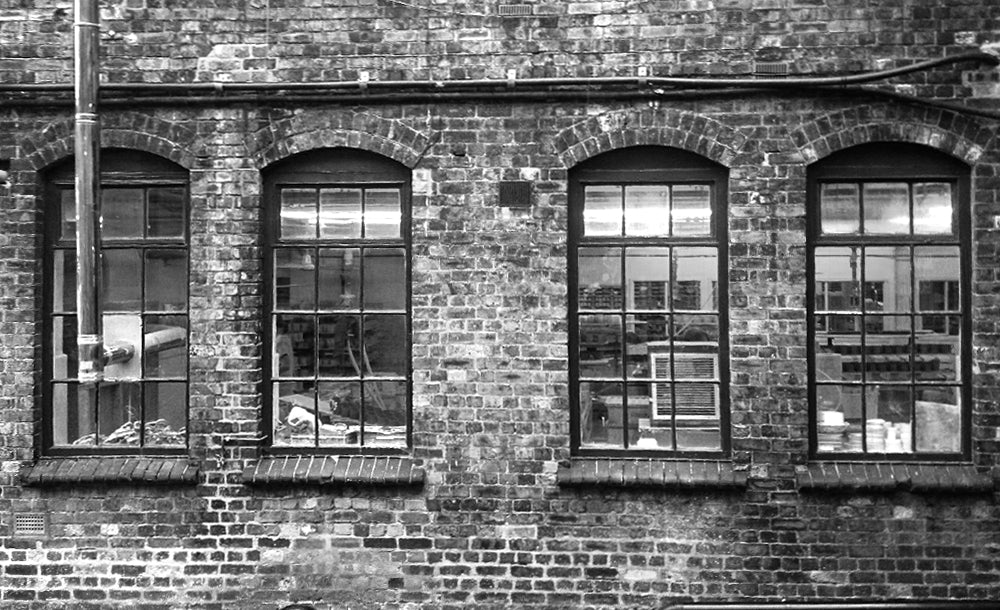
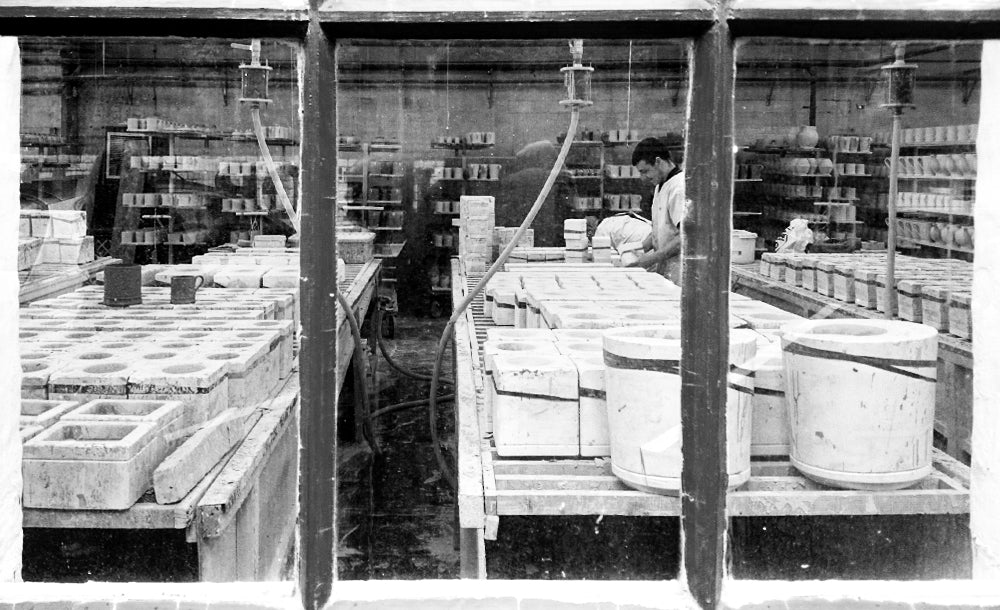
Founded in 1985, the Emma Bridgewater factory is based in an incredible Victorian building next to the Caldon Canal, which was once used to transport materials and products to and from the factory. Today, running at full capacity, it produces almost 30,000 ceramic items every week by some incredibly skilled craftspeople. (Emma Bridgewater is one of the largest employees in Stoke on Trent employing around 180 people).
My factory tour started with the mould making room. The moulds for the ceramics are made from plaster and can be used up to 30 times before having to be replaced. The plaster moulds are formed from red silicone master moulds.
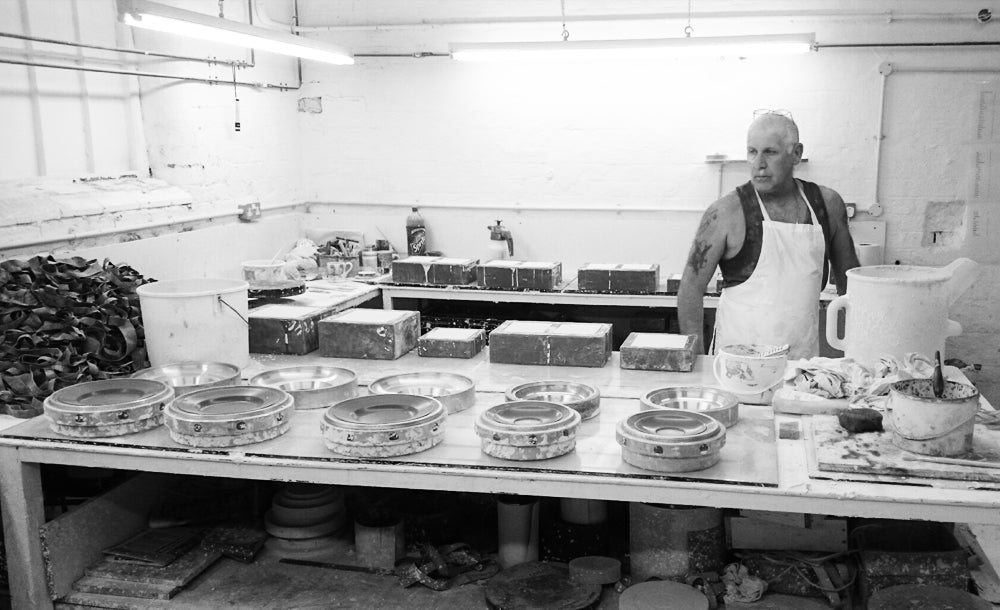
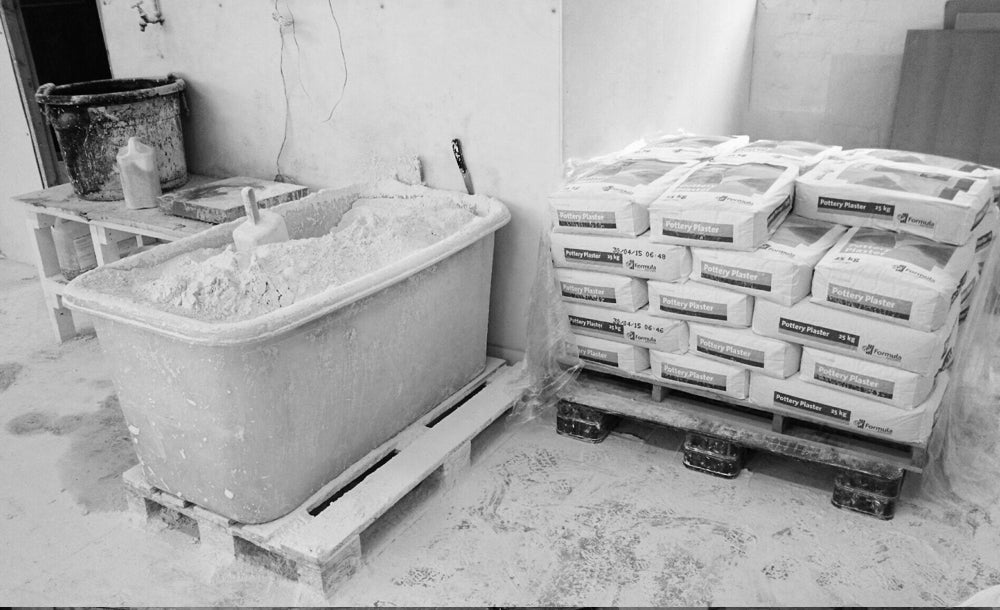
The mould for the famous Bridgewater mug is made up of three parts; Two sides and a Base, held together with old car inner-tubes. It's quite common for the handle of a mug to be formed separately from the mug body and attached later, but the Bridgewater mugs are cast with the handle on in one go.
The next room I visited was the slip mixing room. This is where the British earthenware ceramic is mixed with water in a blunger, like a big cake mix, until it reaches the perfect consistency. This "slip" is then sent through pipes to the casting shop where the slip is poured into the plaster moulds.

As the slip sits in the mould, the plaster absorbs the water causing it to harden. After about 45 minutes the slip is poured out of the mould and you're left with a thick coating inside the mould. The mould is then split and the mug form is revealed. The moulds are then left to dry for around 24 hours before they can be used again.
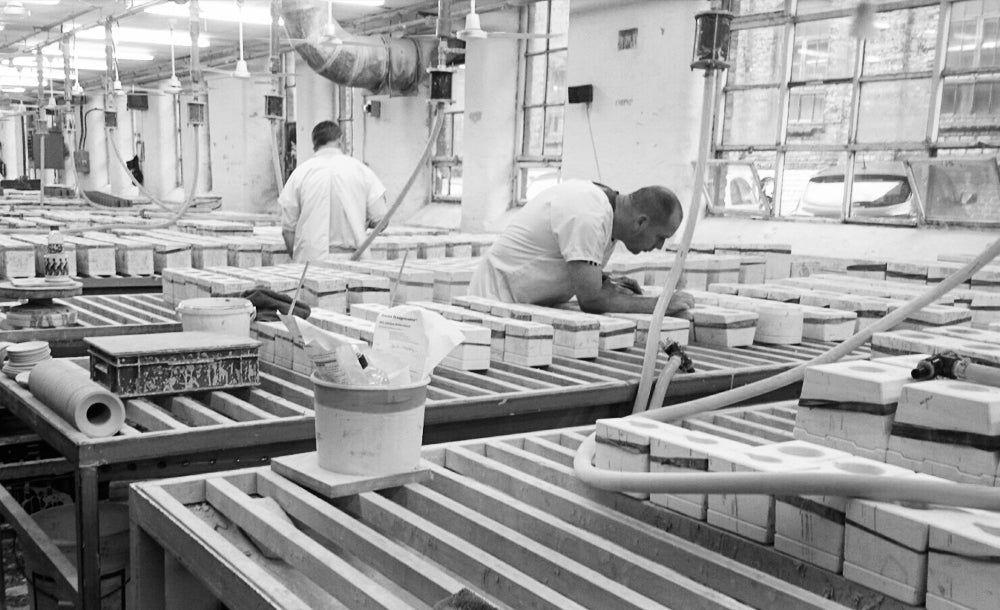
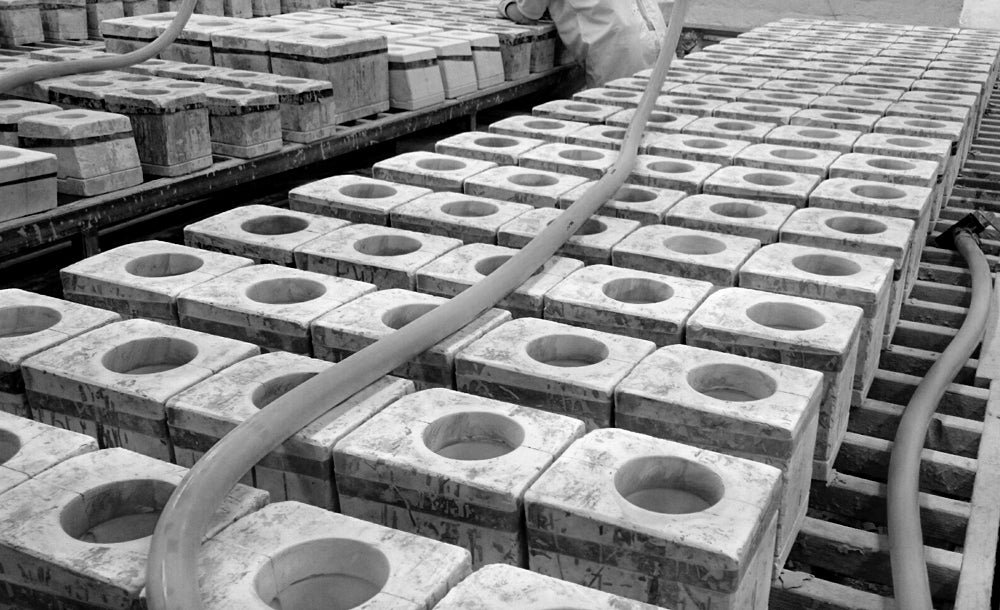

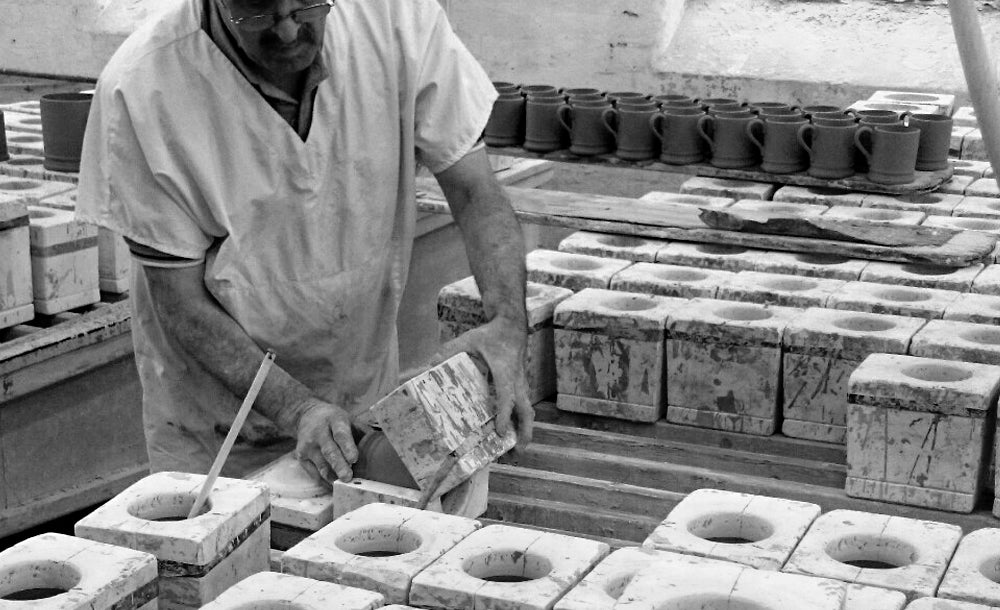
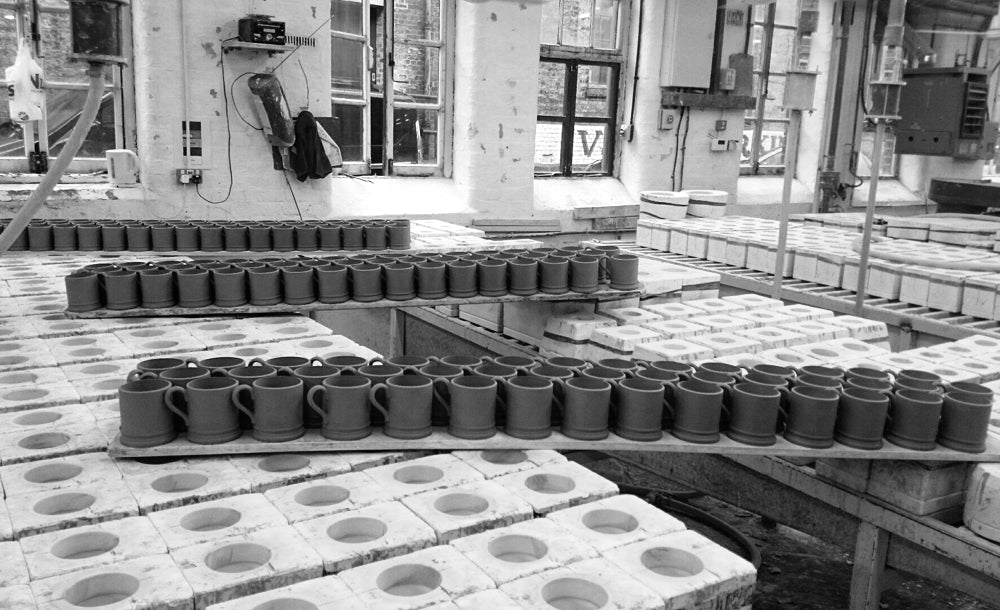
The mugs are now sent to be 'fettled', where the seam lines in the clay left from the mould are removed. They are then 'sponged' to make them perfectly smooth.
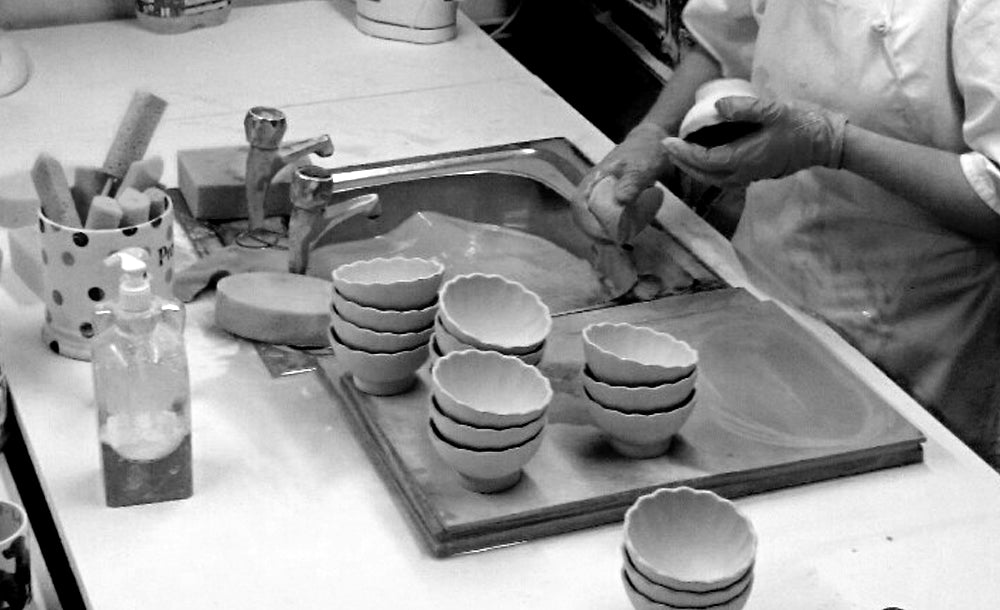
The green mug is then put on a rack to dry before being fired in the Biscuit kiln for 7 hours at 950 degrees. (At any stage before firing the mugs can be turned back into slip, so if they're not perfect they get thrown into a big bucket to be re-moulded).
The next area of the factory is where the ceramics get their real personality; The decorating room. A few of the Emma Bridgewater items have a lithographic decal that's applied before firing, but most of the items are hand painted making each one slightly unique. The painting is done with paintbrushes and sponges. To make the sponges, skilled workers use a soldering iron to melt a sponge forming unique patterns. These are then dipped into paint and dabbed onto the ceramic body.
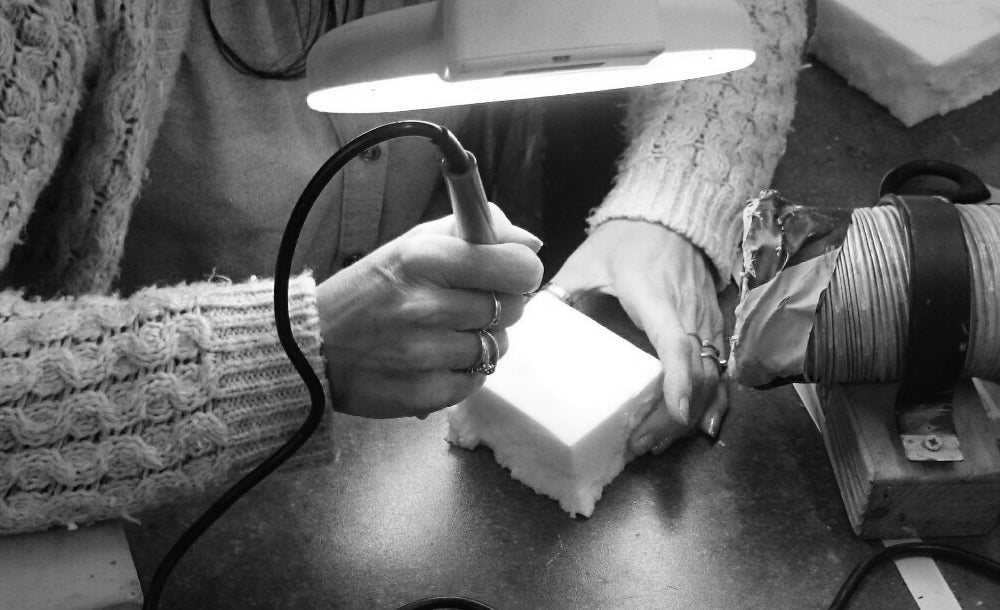
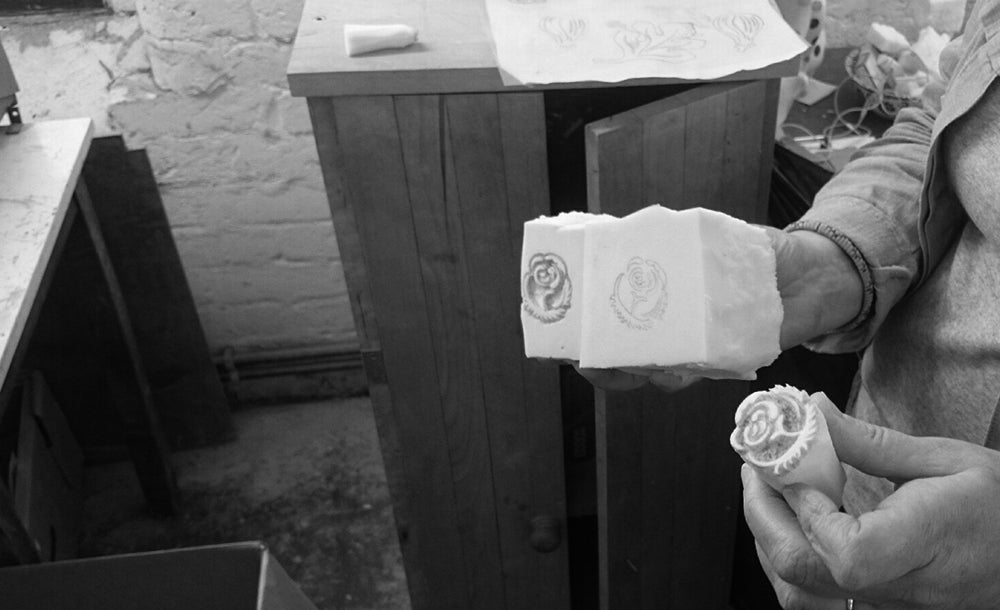
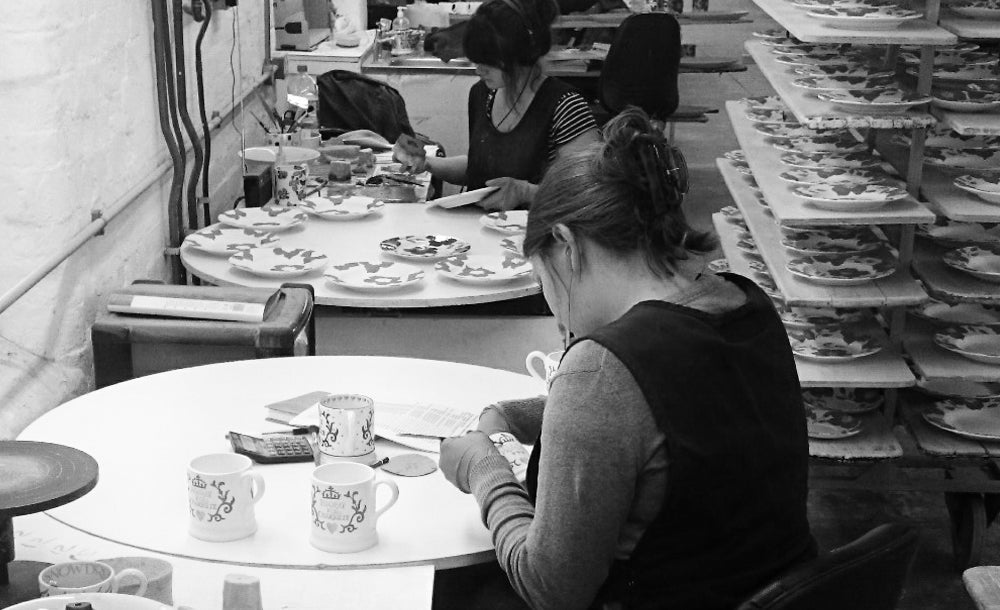

After each decorator signs her work, the mugs are then sent through to be glazed. They're individually dipped into a pool of glaze and sat on a rack ready to be fired in the kiln. (The glaze is tinted pink to make it obvious which items have been dipped).

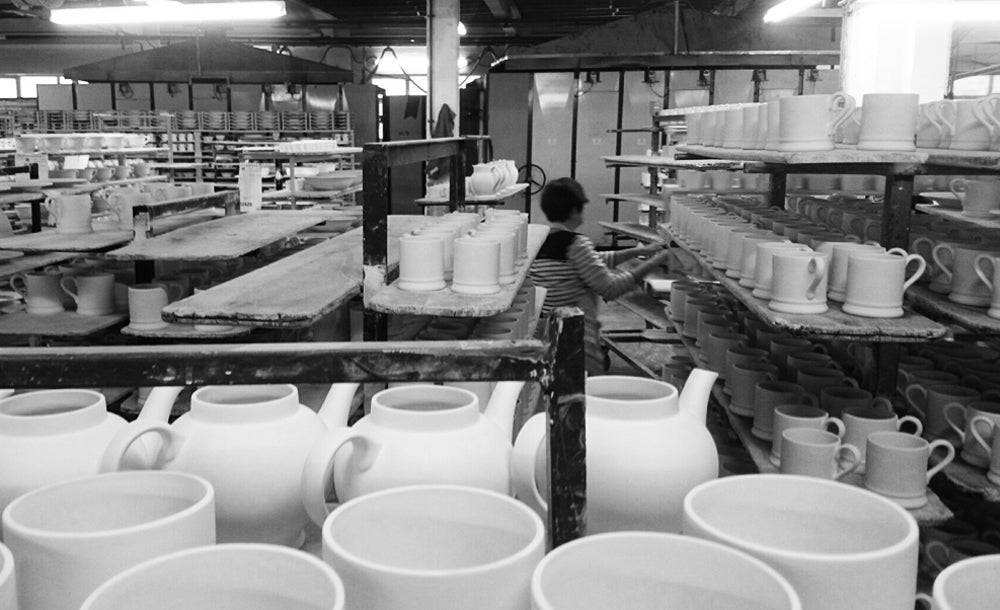
I've worked with ceramics for many years, first learning to slip-cast on my foundation course at Central Saint Martins, and now producing tens of thousands for porcelain pieces at THABTO, and I still find this process and this material fascinating.
Comments will be approved before showing up.